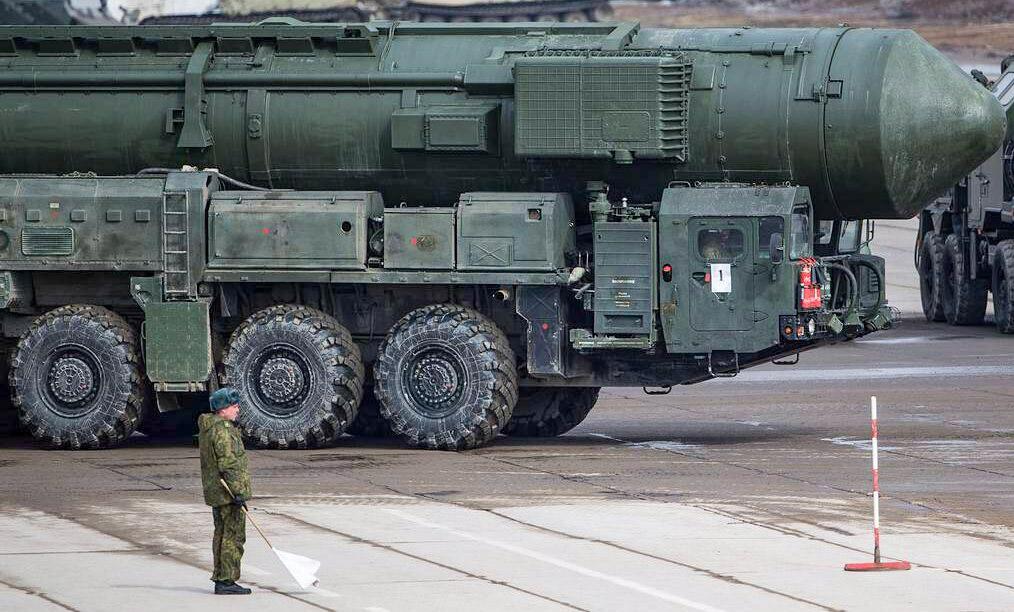Senators question if $20 billion, part of $75 billion annual modernization plan, is too much, too little, too Cold War-centric as strategic policy debate looms.
President Joe Biden’s proposed fiscal year 2025 (FY25) budget request includes a 3.6-percent boost in U.S. Department of Energy (DOE) nuclear weapons programs to nearly $20 billion, an all-time high annual expenditure for the department in the 30-year, $1.5 trillion plan to modernize the nation’s strategic nuclear arsenal.
During a May 1 hearing before a House Energy and Commerce Committee panel, Republicans argued more money must be committed to DOE and Pentagon nuclear weapons programs and the nation’s strategic policy revised for the first time since the Cold War.
But there was little of that during an hour-long May 22 hearing on DOE’s $51.42 billion and National Nuclear Security Administration’s (NNSA) $25 billion FY25 budget requests before the Senate Appropriations Committee’s Energy & Water Development Subcommittee.
In fact, chair Sen. Patty Murray (D-Wash.) said NNSA’s $25 billion plan, an increase of $865 million over this year’s budget, places too much emphasis on weapons development and not enough on non-proliferation and nuclear waste mitigation.
“I want to see a better balance than increasing nuclear weapon activities by 4 percent to nearly $20 billion while decreasing nuclear non-proliferation and clean-up by 4.5 percent and over 2 percent respectively,” she said.
Ms. Murray was referring to House Appropriations Committee chair Rep. James Comer’s (R-Ky.) announcement that House Republicans will propose 6-percent slashes to non-defense FY25 budget requests contrary to 2023’s Fiscal Responsibility Act (FRA), which caps “discretionary” FY25 spending hikes to 1 percent.
“Unfortunately, House Republicans are already once again planning to ignore the bipartisan deal they cut last year and are now pushing through drastic spending cuts … that are going nowhere” in the Senate, she said.
There’s legitimate concern “on both sides” about how FRA spending caps “will undermine our nation’s strength,” Ms. Murray said.
“I share those concerns and have made it clear that any additional resources must be provided equally between the defense and non-defense sides of the ledger” because “both play a vital role in securing our nation’s future,” she said, including non-proliferation and nuclear clean-up efforts such as those at Hanford, Washington.
‘Decision To Be Made’
Under Secretary of Energy for Nuclear Security and NNSA Administrator Jill Hruby said the spending plan includes $19.8 billion for weapons development. NNSA delivered 200 nuclear weapons to DOD in 2023, its annual report notes.
NNSA’s proposed FY25 spending plan also earmarks $2.5 billion for non-proliferation programs and $2.1 billion for naval reactors.
The Biden administration’s proposed $892 billion defense budget earmarks $49.2 billion “to modernize and recapitalize all three legs of our nuclear triad.”
The Biden administration has committed $141 billion to the effort in the last three years, U.S. Secretary of Defense Lloyd Austin told the House Armed Services Committee in April.
However, NNSA and DOD spending plans incorporate none of the recommendations forwarded by the 12-member commission in its fall report, which called for accelerated replacement of aging nuclear weapons stockpiles, advancement of new technologies, and expanding space capabilities.
During a Nov. 15 hearing before the House Armed Services Committee, chair Rep. Mike Rogers (R-Ala.) said among the differences between President Biden’s NPR and the report is the commission’s urgency in identifying Russia’s “alarming stockpile of nuclear weapons,” especially its investments in tactical nuclear weapons, which it has “at least a 10-to-1 advantage over the U.S.”
Russia exploits this advantage with threats to use battlefield nukes, including recently against the United Kingdom and France for assisting Ukraine, and with field exercises—such as those underway now in Belarus—where such weapons are moved, locked, and loaded by troops.

Sen. Jeanne Shaheen (D-N.H.) said with Russian President Vladimir Putin “rattling sabers about their nuclear weapons during the war in Ukraine and also the concern about weaponizing space with nuclear weapons,” there’s added anxiety with Russia withdrawing from New START arms control talks with the United States.
There’s no direct communication with Russia right now, Ms. Hruby said, but there’s plenty of discussion.
“The approach we’ve taken … is, since we’re not talking to our adversaries, let’s double down on talking to our allies and partners,” she said. “We’ve spent a lot of time in NATO and Asia, with our partners around the world. This environment is creating a great deal of cooperation. I say the nuclear IQ is higher than it’s been in a long time.”
DOE Secretary Jennifer Granholm defended the administration’s strategic spending, noting since assuming office, weapons development has increased by 22 percent.
“The growing cooperation between Russia and China and Iran and North Korea has created a more dynamic, less predictable, international environment, increased saber-rattling, and aggression against our allies and cyberattacks,” she said.
The proposed plan gives NNSA “the means to deliver and adapt in the face of these evolving threats,” Ms. Granholm said.
That’s certain to be debated in Congress this summer. The House Appropriations Committee is expected to soon call for significant boosts in nuclear weapons spending and for revisions outlined by the commission’s fall report.
“We’re well aware of what is going on” regarding the looming debate, Ms. Hruby said. “When it’s finished, there’s a decision to be made.”
